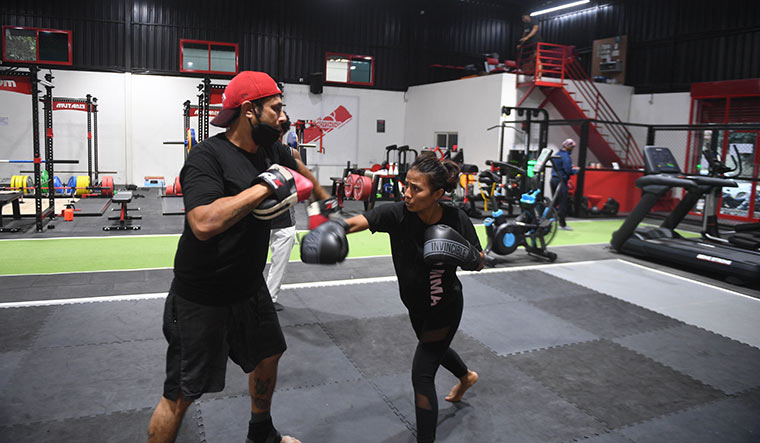BENGALURU CROSSED ONE lakh Covid-19 cases on August 21, accounting for 37 per cent of the total cases in Karnataka. In May, the city had been praised as a model for managing the pandemic as it had reported only 280 cases and 11 deaths. But since mid-July, the city has found itself battling a surge.
The surge followed the lifting of the lockdown, the resumption of economic activities, interstate migration, fatigue of Covid warriors, complacency in contact tracing and the callous attitude of the citizens. Health officials, however, hint that the pandemic may have peaked in the city. “The ongoing sero survey can indicate the peak or the prevalence and immunity levels in the community. But our focus now should be to contain the virus, reduce mortality and adhere to the social distancing norms,” said Dr M.K. Sudarshan, chairman of Karnataka’s Covid-19 technical advisory committee.
Delhi, which has a population of 1.9 crore, had nearly 3,500 daily positive cases at the peak of the pandemic. Daily positive cases in Bengaluru, with a population of 1.3 crore, seem to have plateaued at around 3,500, although testing has been scaled up. "In the beginning of July, we used to conduct 4,000 tests per day. Now we are conducting 25,000 tests. We are also tracing more contacts per patient," said Munish Moudgil, special officer for the Covid-19 war room.
Shortage of beds has been a major challenge. It is now being addressed with a real-time centralised bed allocation system, which helps patients locate hospitals with bed availability. A change in the quarantine norms has been rewarding, too.
“Home isolation has reduced deaths. Patients are regularly monitored using pulse oximeters and are rushed to hospitals only if their oxygen saturation level drops,” said Dr C. Nagaraj, a member of Karnataka’s treatment protocol committee. “At least 40 per cent of the Covid patients who came to hospitals used to die within a day. But now, ward-wise medical triage teams are helping in early intervention and also in freeing up hospital beds for critical patients.”
Also read
- Covid: Two-day nationwide mock drill to assess preparedness from today
- AIIMS to perform only urgent surgeries from Saturday as COVID cases spike
- HC asks Delhi Govt why it didn't 'wake up' when COVID-19 numbers were spiraling
- Governments need to avoid imposing arbitrary lockdowns
- Metros vs microbe
- Newer targets
The Bengaluru team has found that high flow nasal cannula and non-invasive ventilation are more effective than ventilators for critical patients. “We started monitoring all patients with finger clip pulse oximeters, which give an alert the moment oxygen levels go below the threshold level. This has improved the chances of survival,” said Dr Trilok Chandra, chief nodal officer of Tele ICU, an online facility to treat critically ill patients in remote areas.
The Bruhat Bengaluru Mahanagara Palike has stopped barricading containment zones and labelling homes under quarantine to destigmatise Covid and encourage people to seek early medical intervention.
Karnataka Medical Education Minister Dr K. Sudhakar, who has been the face of the battle against the pandemic in the state, said Bengaluru was leading from the front in providing innovative solutions to fight Covid-19. “Bengaluru accounts for only 10 per cent of the total deaths among the top four metro cities in the country,” said Sudhakar. “The mortality rate in Bengaluru has come down from 3.11 per cent on May 31 to 1.55 per cent in August. The recovery rate is 66.12 per cent, with less than 1 per cent of the cases being treated in ICUs. So Bengaluru is definitely doing well in containing the pandemic.”


